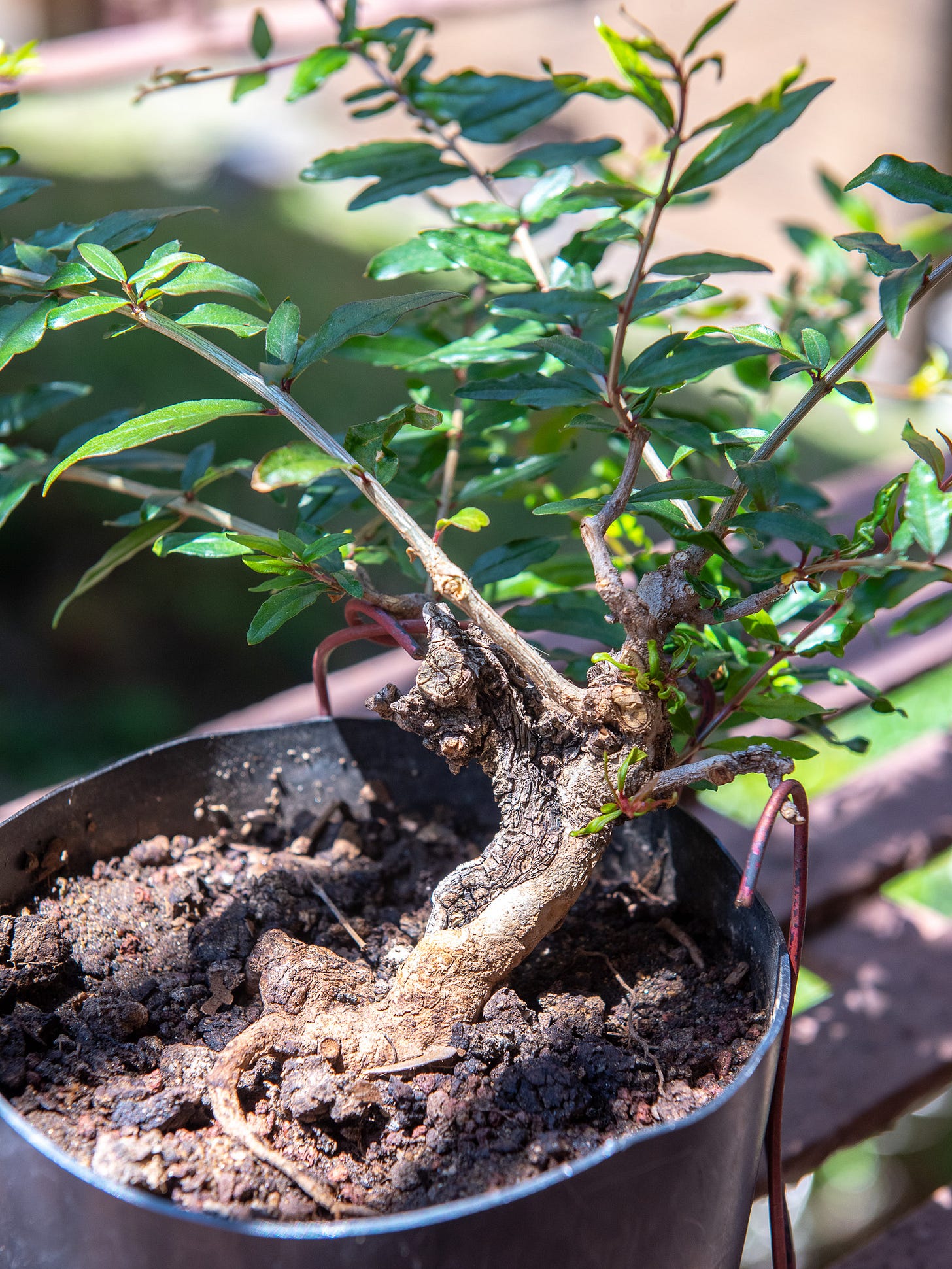We took casualties this winter. My two pomegranates and one of my boxwoods died in a cold snap, and my other boxwood and Scots pine were stolen from their planter beds. The dead trees I could stomach. I had reached artistic dead ends with each of them and was mostly using them for practice. The stolen trees, though, they hurt. Neither the pine nor the boxwood were especially nice pre bonsai. They didn’t look bonsai-like. But I learned a lot developing them and was looking forward to their next steps this spring.
So I indulged in some retail therapy.
I wish I had photos of this pom-pom canopy before I took the shears to it; the bushy branches carried the risk of inverse taper if left unchecked. I trimmed all the dead branches, the trifurcations and quadrifurcations, and the shoots perpendicular to the tree’s front viewing angle—ones that looked like they’d poke you in the eye. What remained is the slanting design you see.
I’ve let the remaining branches grow wild to help the tree recover. As of this morning, its wingspan stretches nearly three feet.
This new pomegranate is an auction find on the expensive side for my collection: $100 plus shipping. I’m paying for snarly deadwood, a wide root base, an established trunk, and a dense crown of branches. Years of someone’s skillful work on material with good character—all of which would take me much longer to attempt myself. My new pomegranate isn’t a bonsai yet, but it’s not raw material either. We don’t so much own trees as we take turns being prevailed upon by them, and it’s my turn to take this pomegranate through the next steps of its growth.
Next steps include unearthing the surface roots and transplanting the tree to new soil: projects I planned for my stolen boxwood and pine this spring. My pomegranate will allow me to pick up where I left off on those trees. Maybe my stolen trees will give the same opportunity to someone else.
Something I keep having to remind myself is that bonsai isn’t about any one particular tree; it’s an accumulation. My skill isn’t measured by an individual success or failure. The Buddhist teacher Aachan Chah might say my trees are already dead. Knowing this in advance, I’m free to enjoy them while they’re here.
I’ll let the pomegranate’s branches journey outward until they gain some girth near the trunk. (As you can see from the photos, you don’t achieve thick branches without growing them out to vastly disproportionate length.) From there I plan to be more conservative with this tree than my past pomegranates. I’ll take it slow and repot it in summer 2024.
Do you see the wave of live tissue curling over the old bark? This is the tree reasserting itself after traumatic transplant from whatever condition it had been in before, possibly a field grown or collected plant. I don’t know its history. But by repotting time next year, I’ll know how much of its reclamation growth has occurred on my watch.
Will the tree be more “my” pomegranate then? No more than it is today.
Tree reading
The next step in the fight to protect Atlanta’s old growth forest from the disastrous boondoggle of Cop City. [WABE]
A satisfying clip of a dead tree falling apart like Legos as it hits the ground. [Tiktok]





